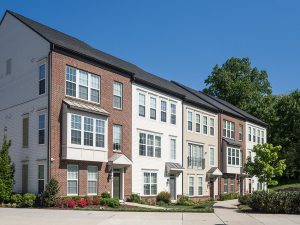
This blog post is also published as a Greater Greater Washington guest column.
A key contributor to Montgomery County’s housing crisis might surprise you: Stairwells.
As in most of the United States, Montgomery County apartment buildings taller than three stories must have two stairwells connected by a hallway. It’s part of a century-old building code requirement to help residents quickly escape in case of a fire.
But many experts now say double stairwells have become redundant amid modern sprinkler systems, fire-resistant walls, and other vastly improved fire-protection technology. Moreover, the requirement significantly increases building costs, takes up space that could be used for additional or larger apartments, prices out smaller developers, and makes it difficult to build on smaller lots … Continue reading








